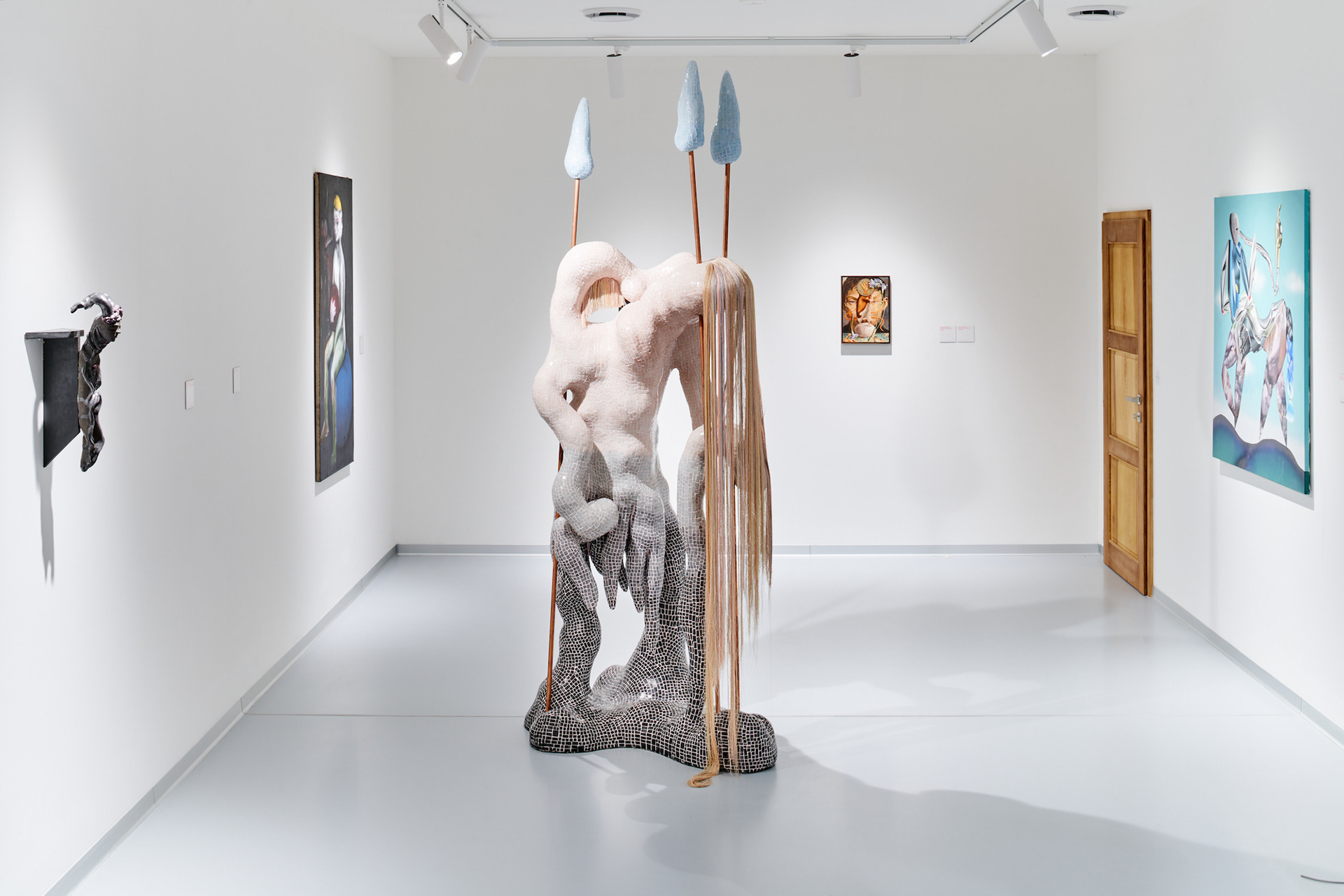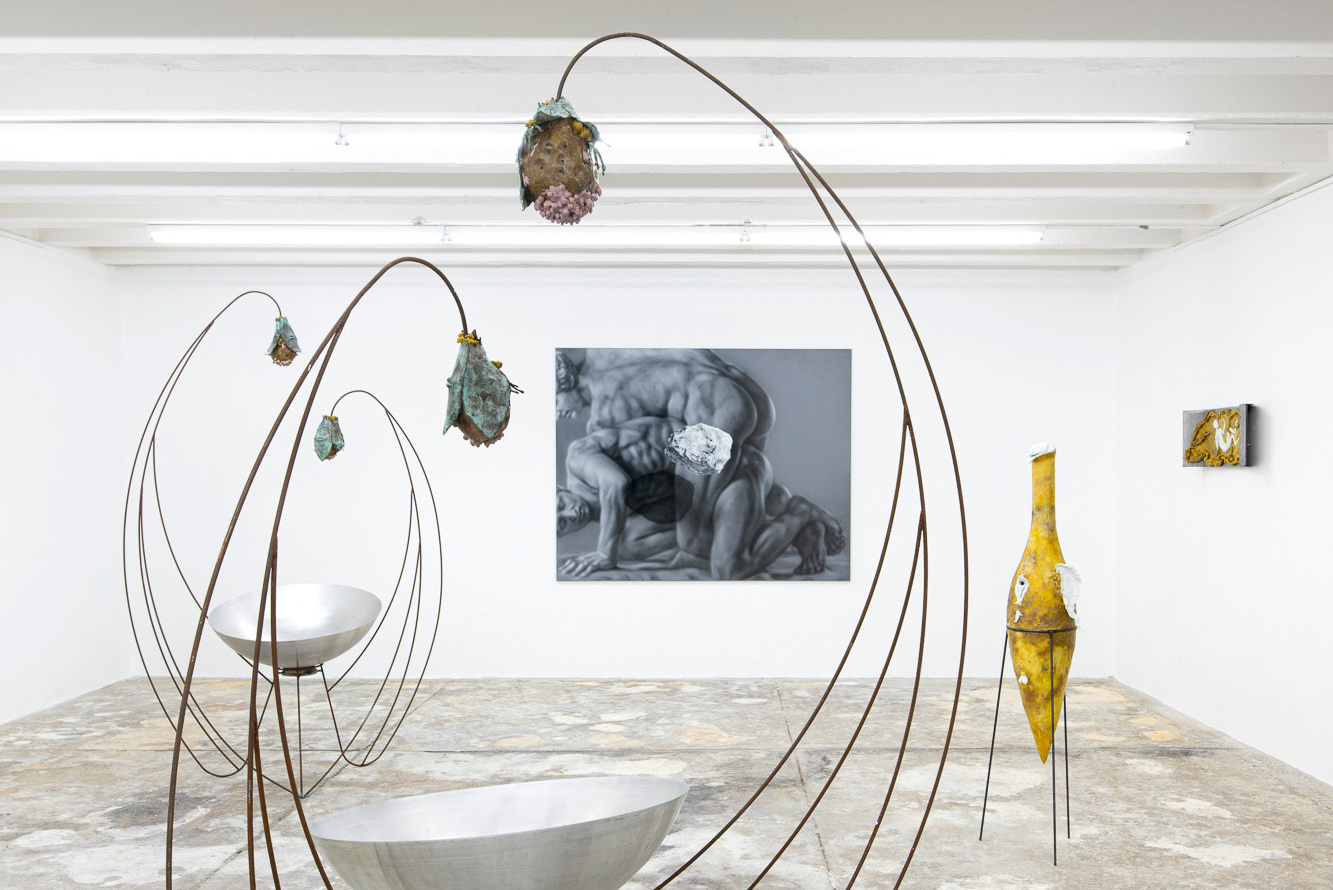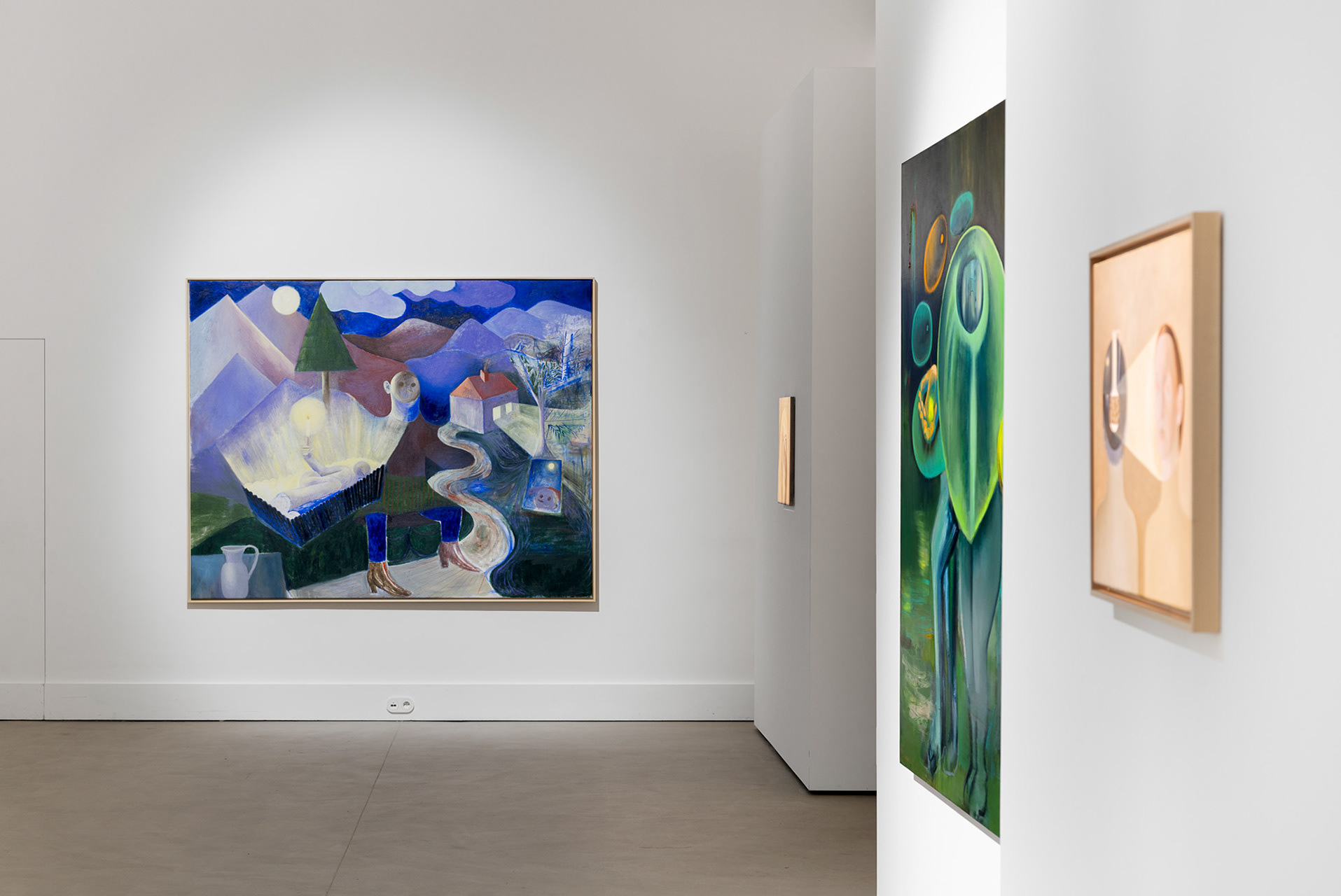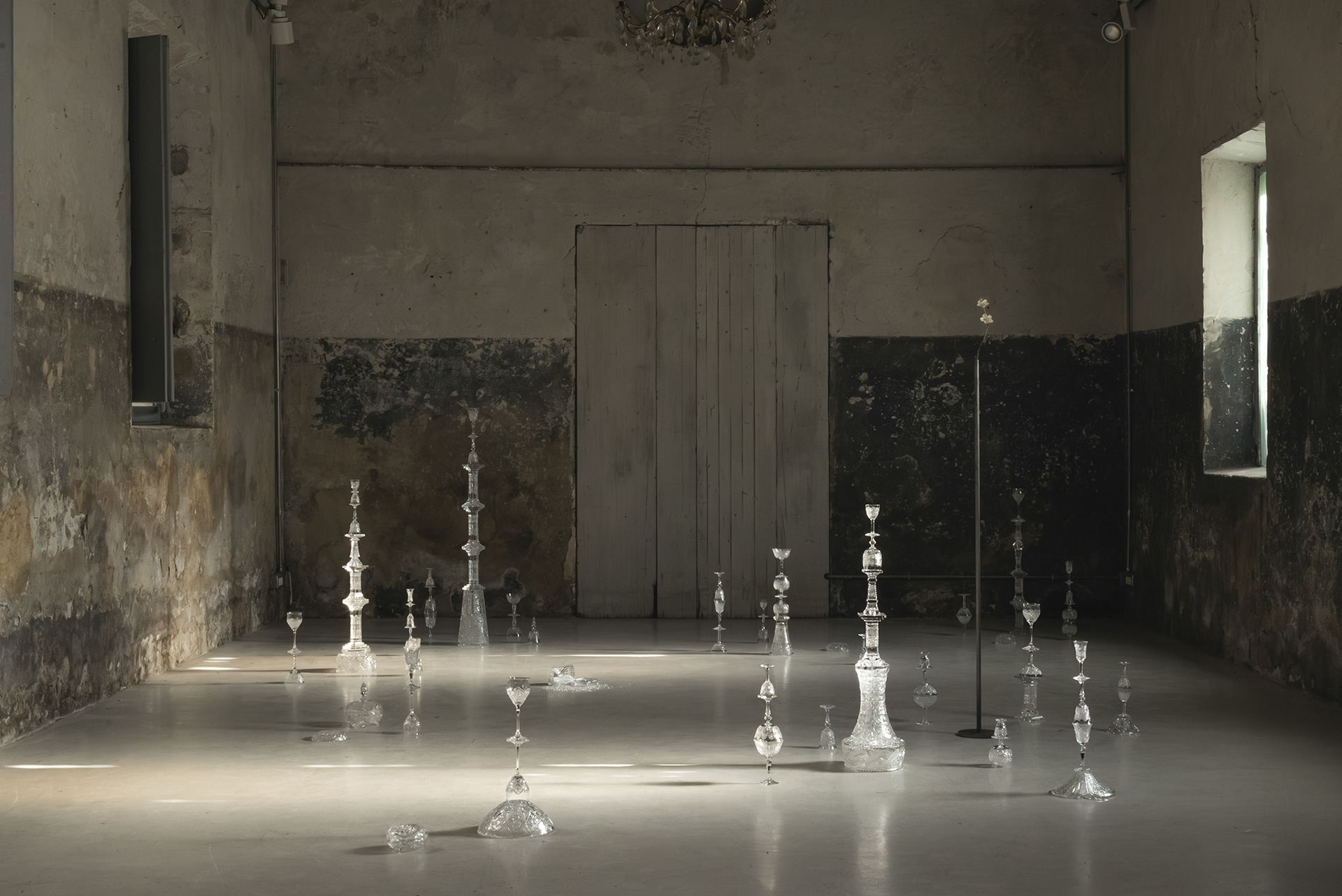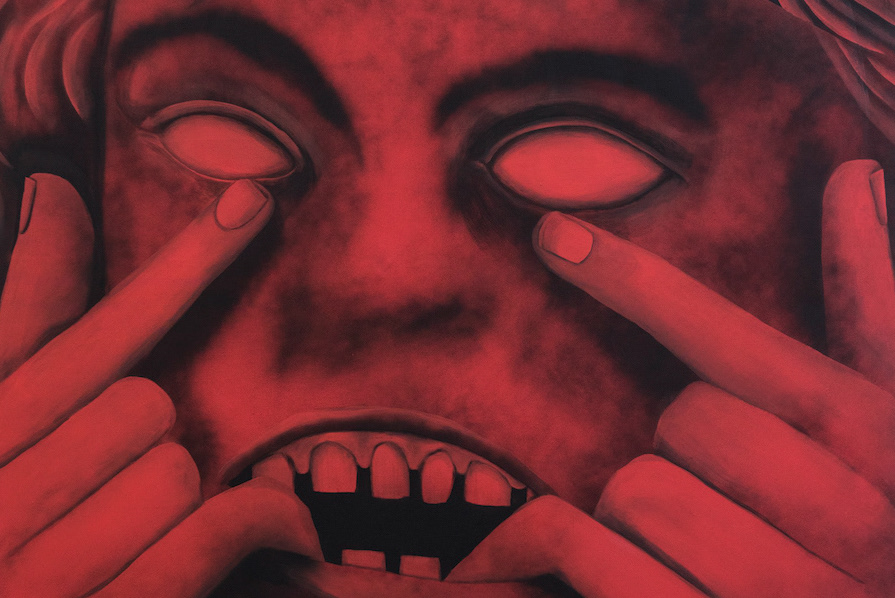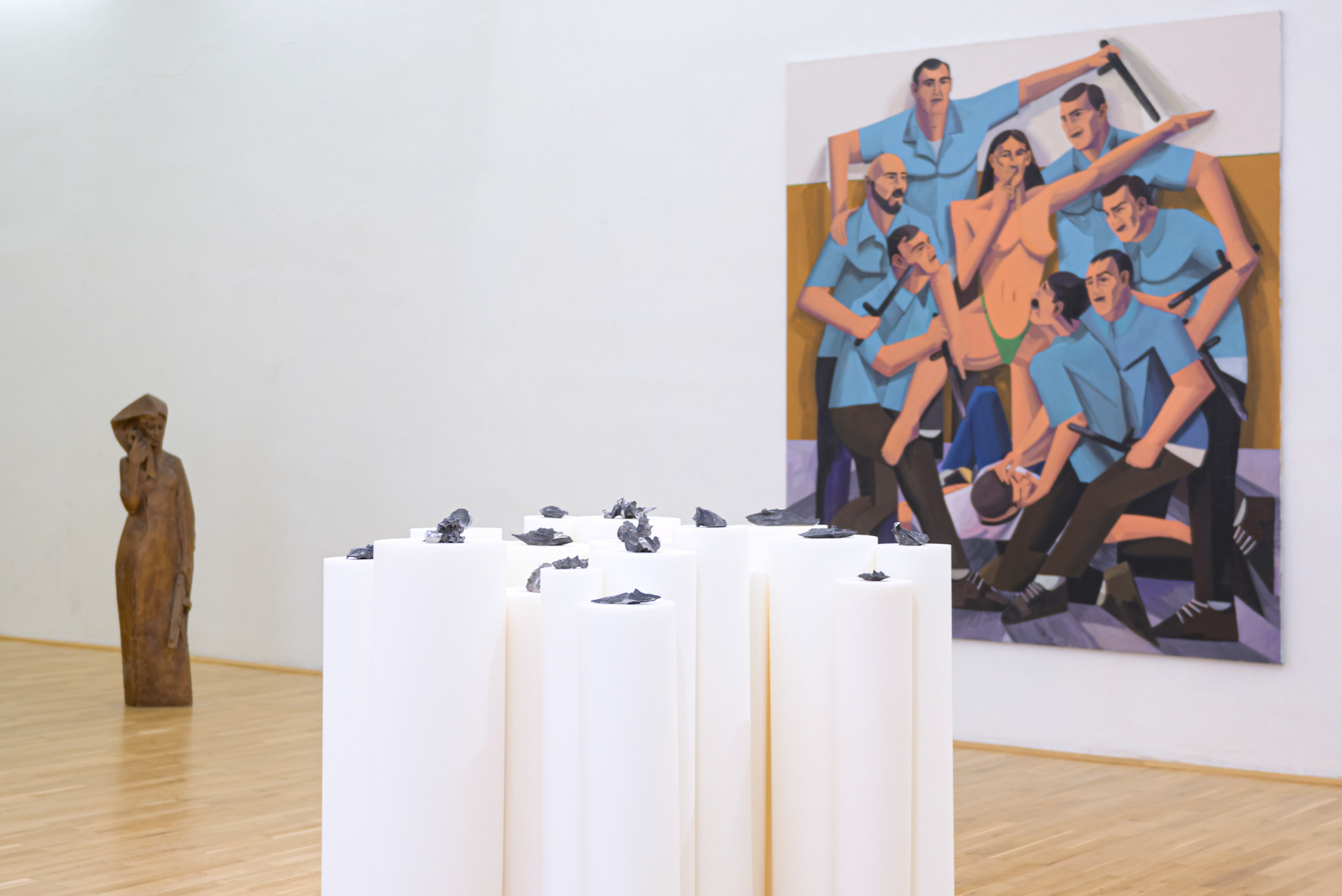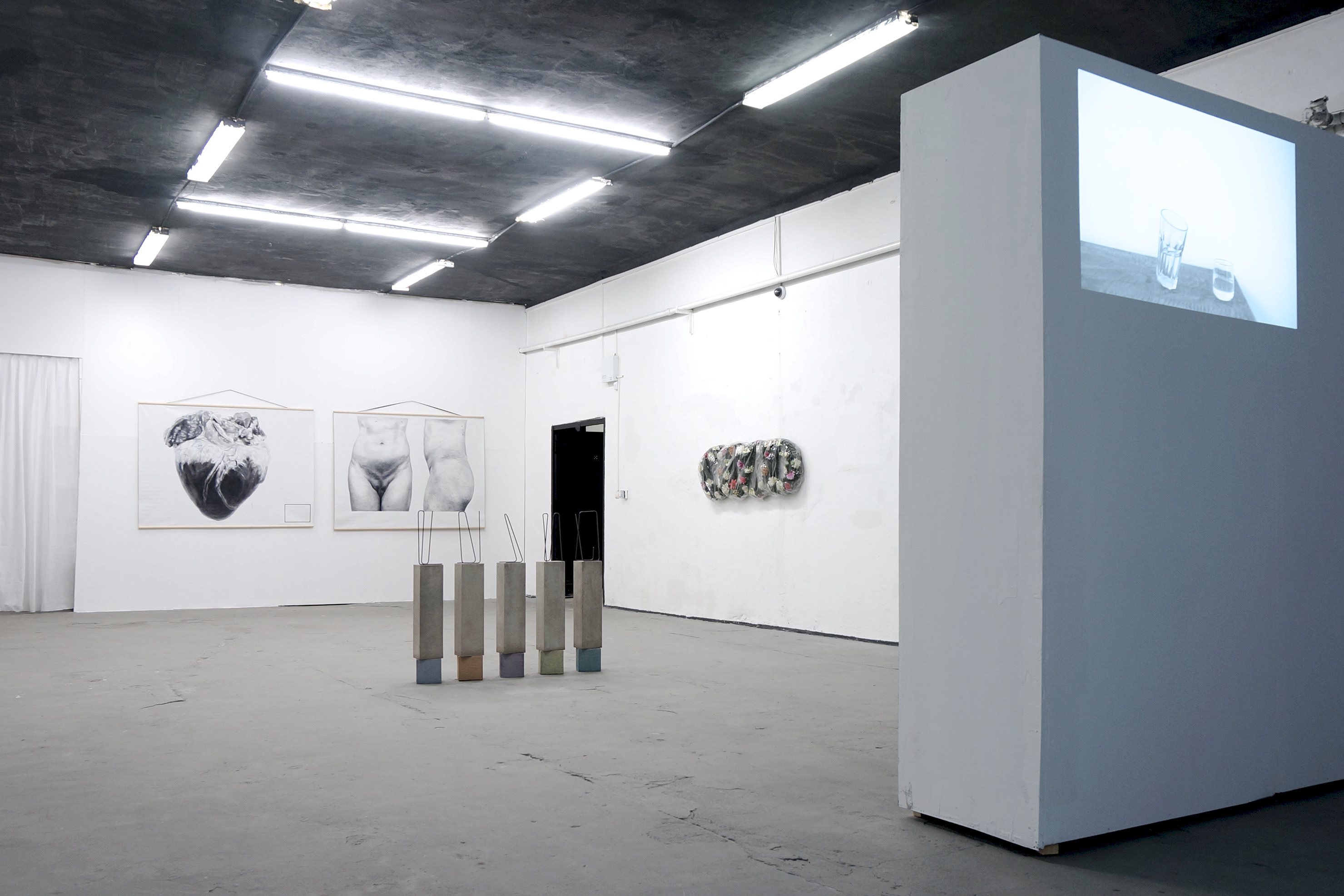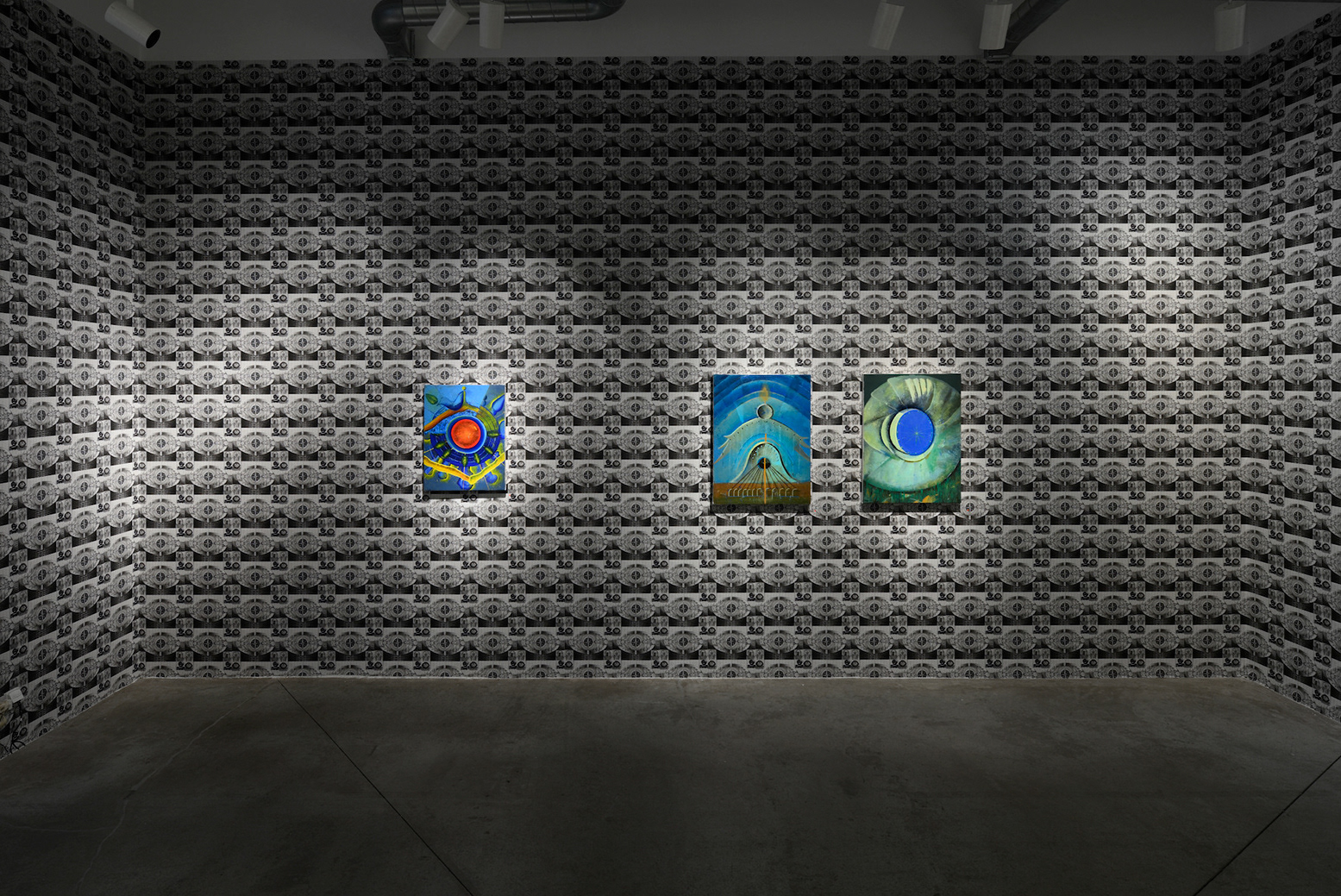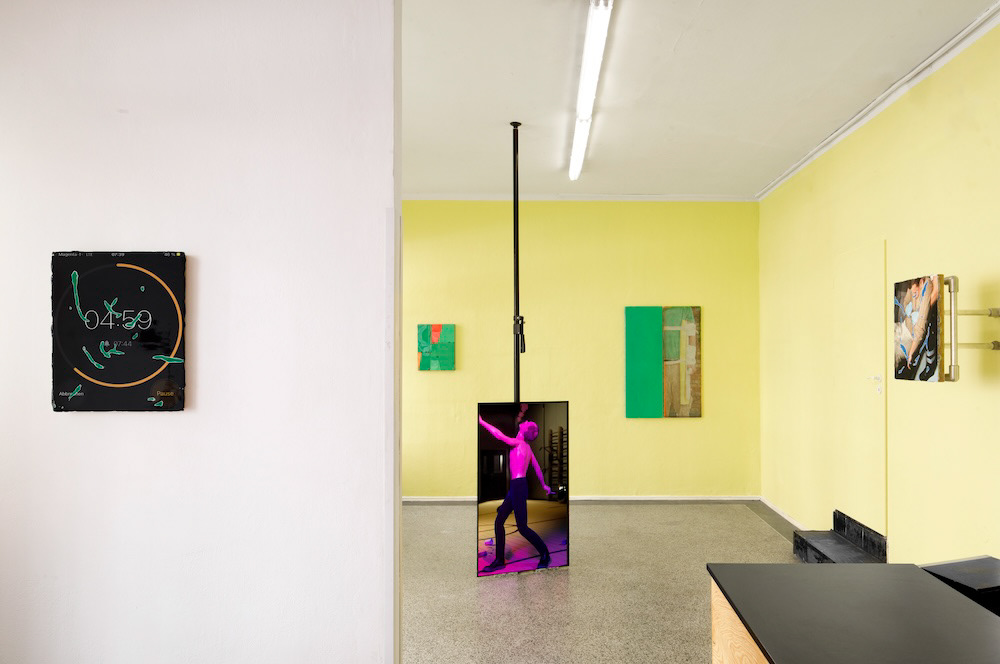

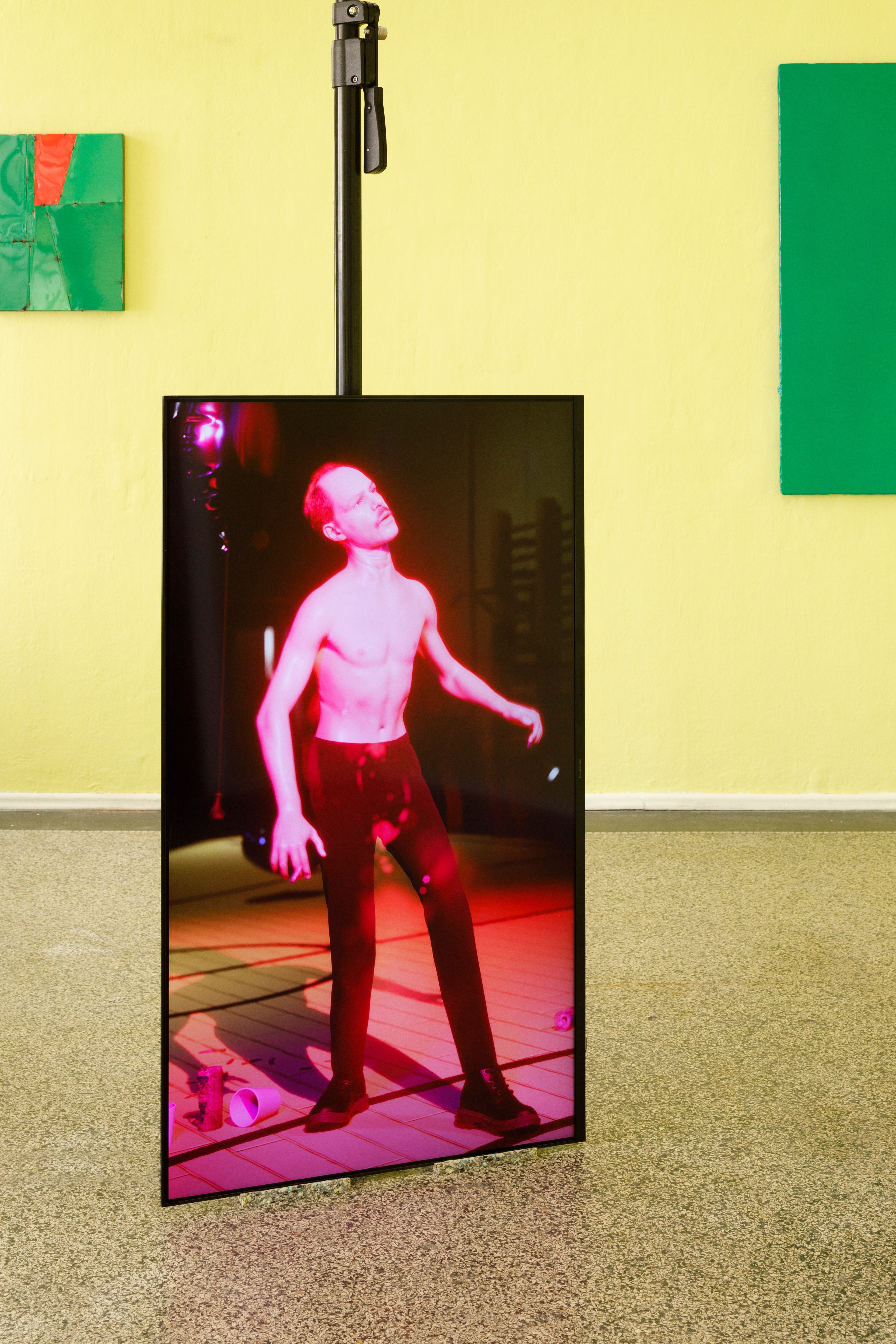
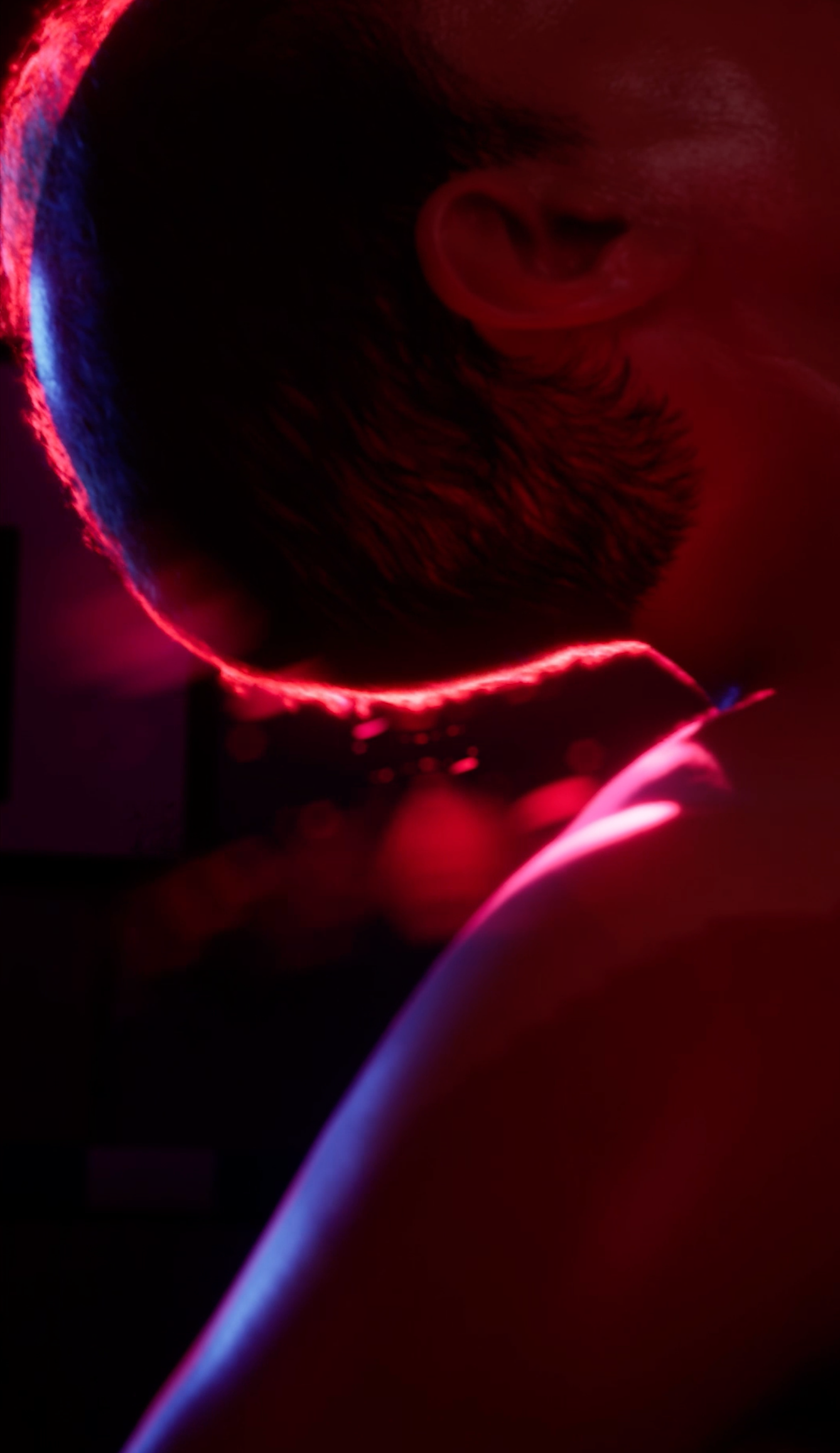
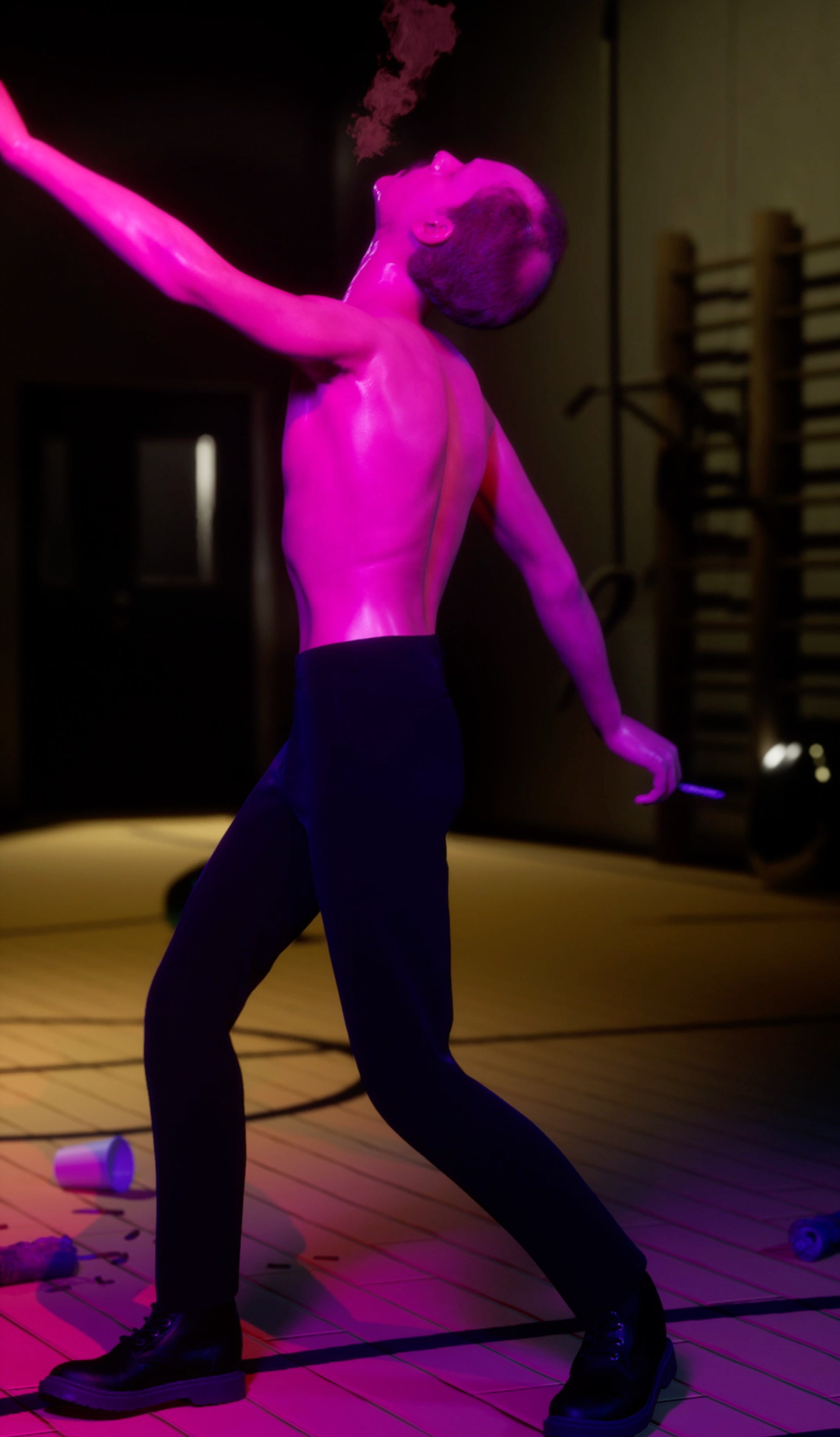

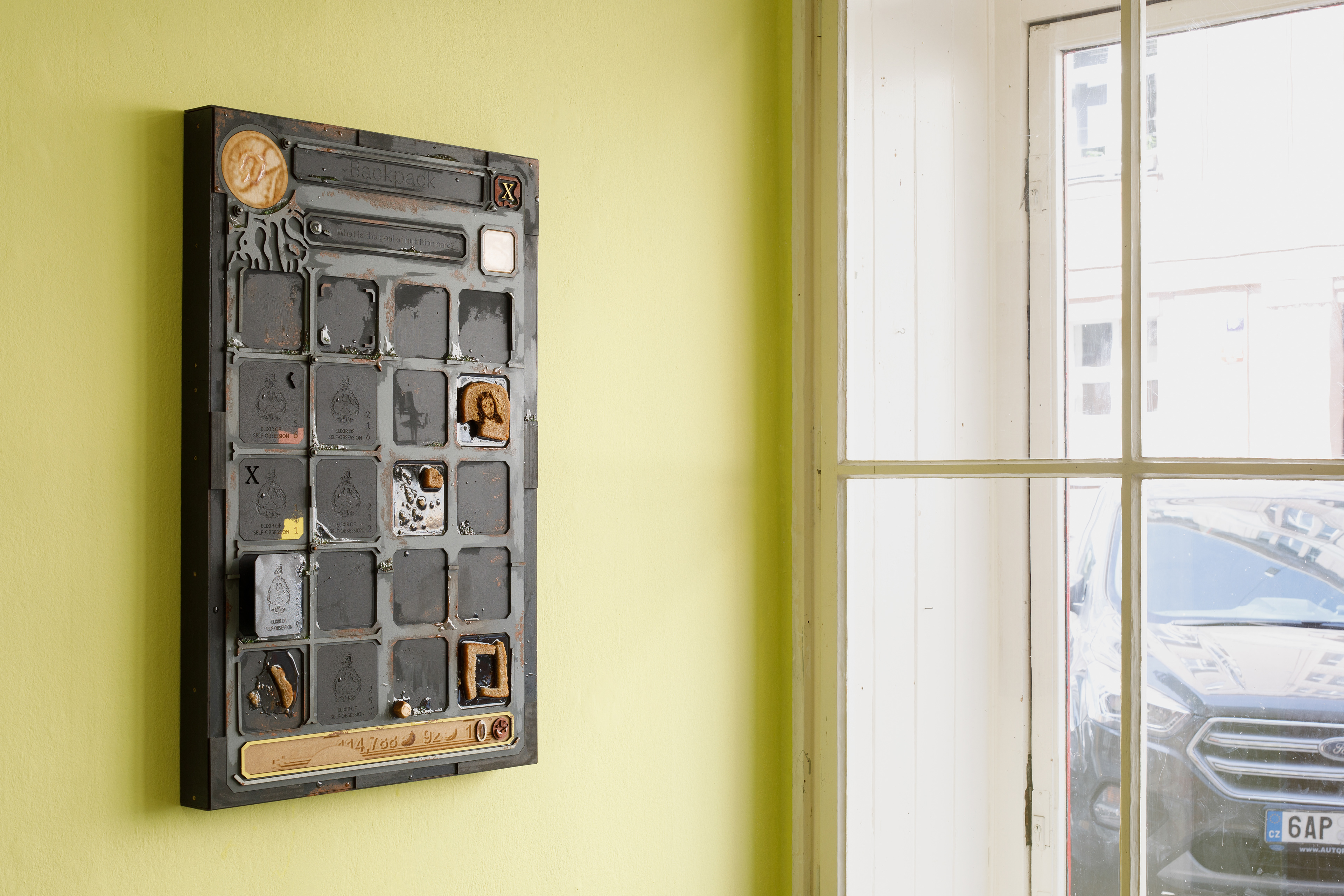

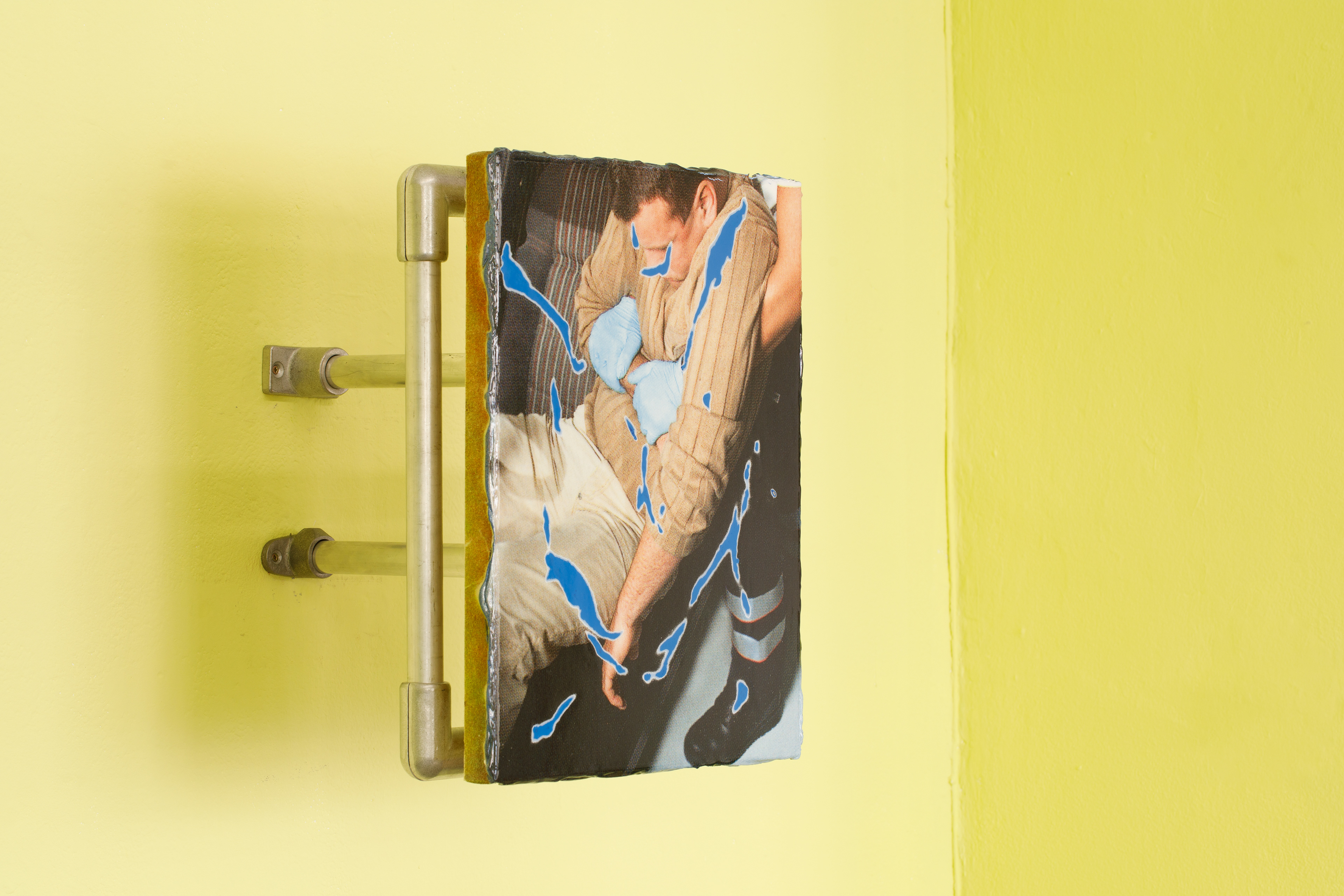
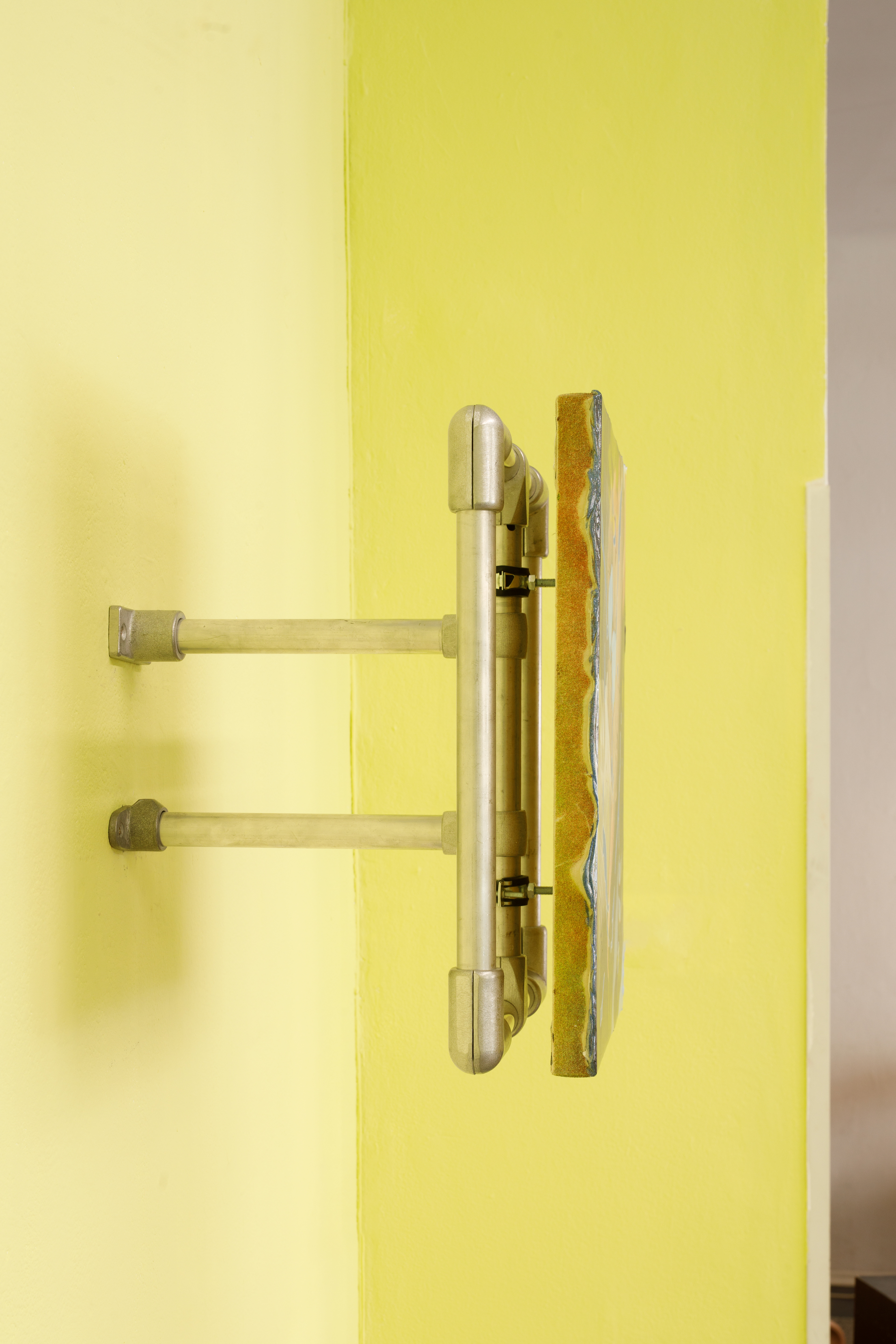
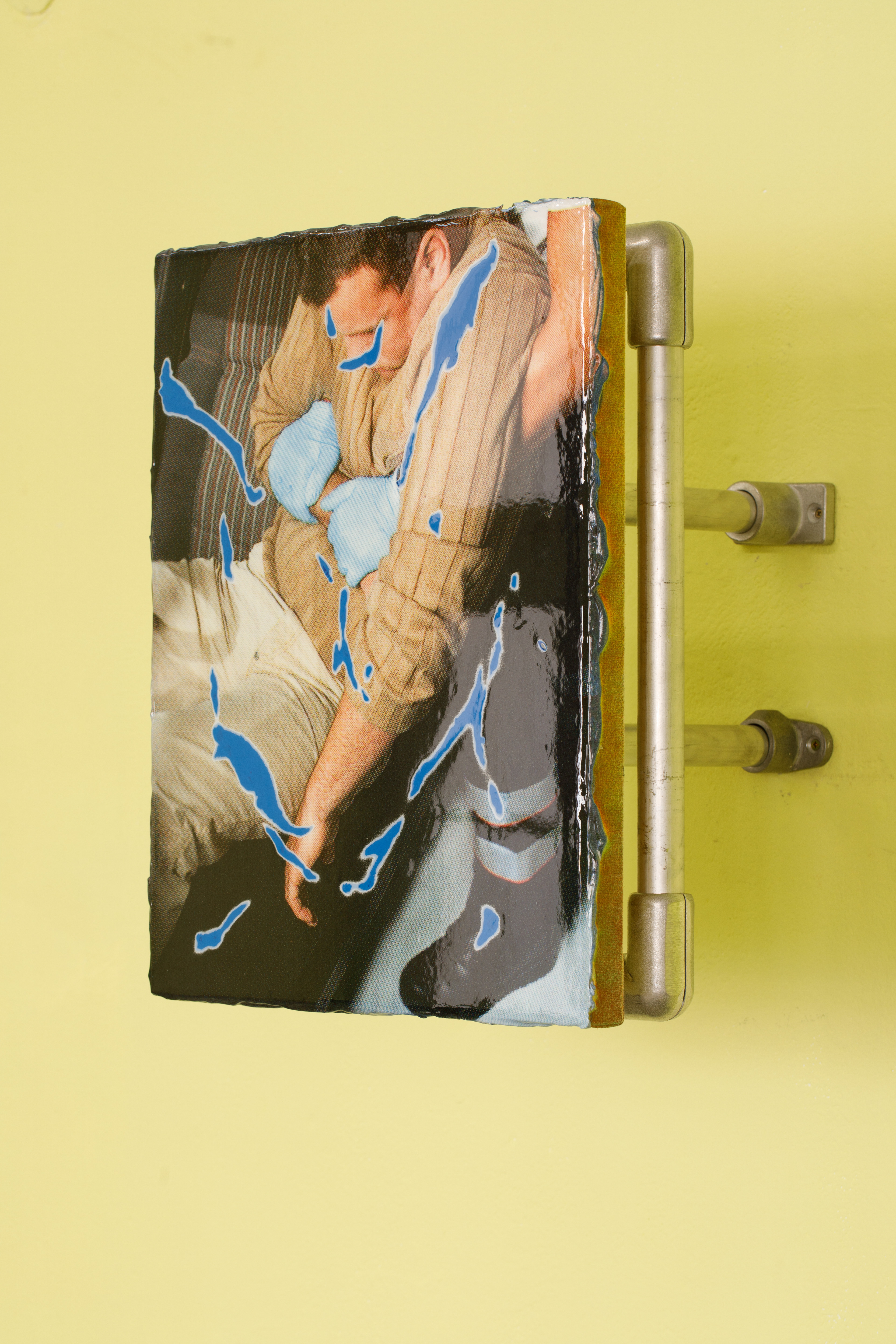

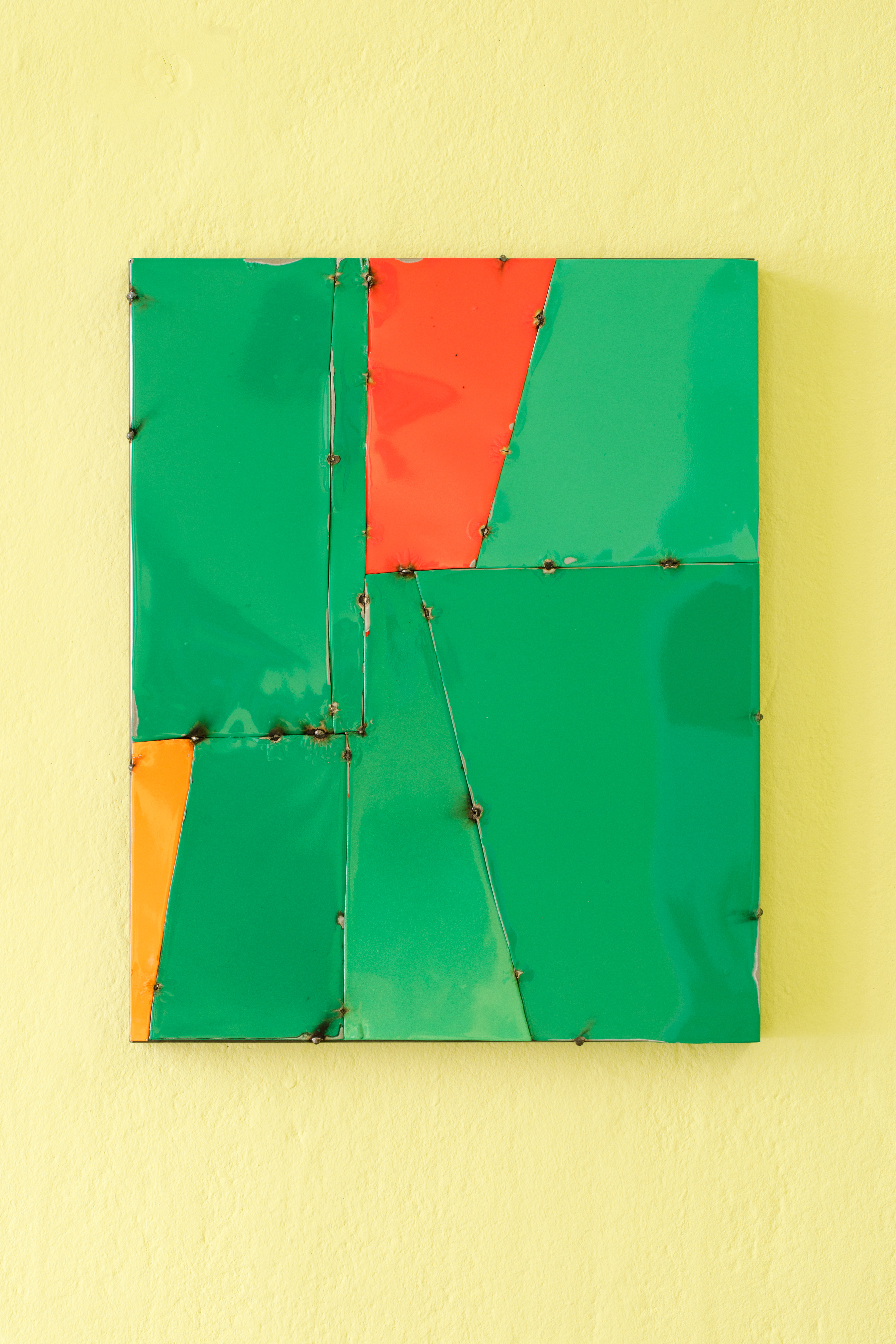
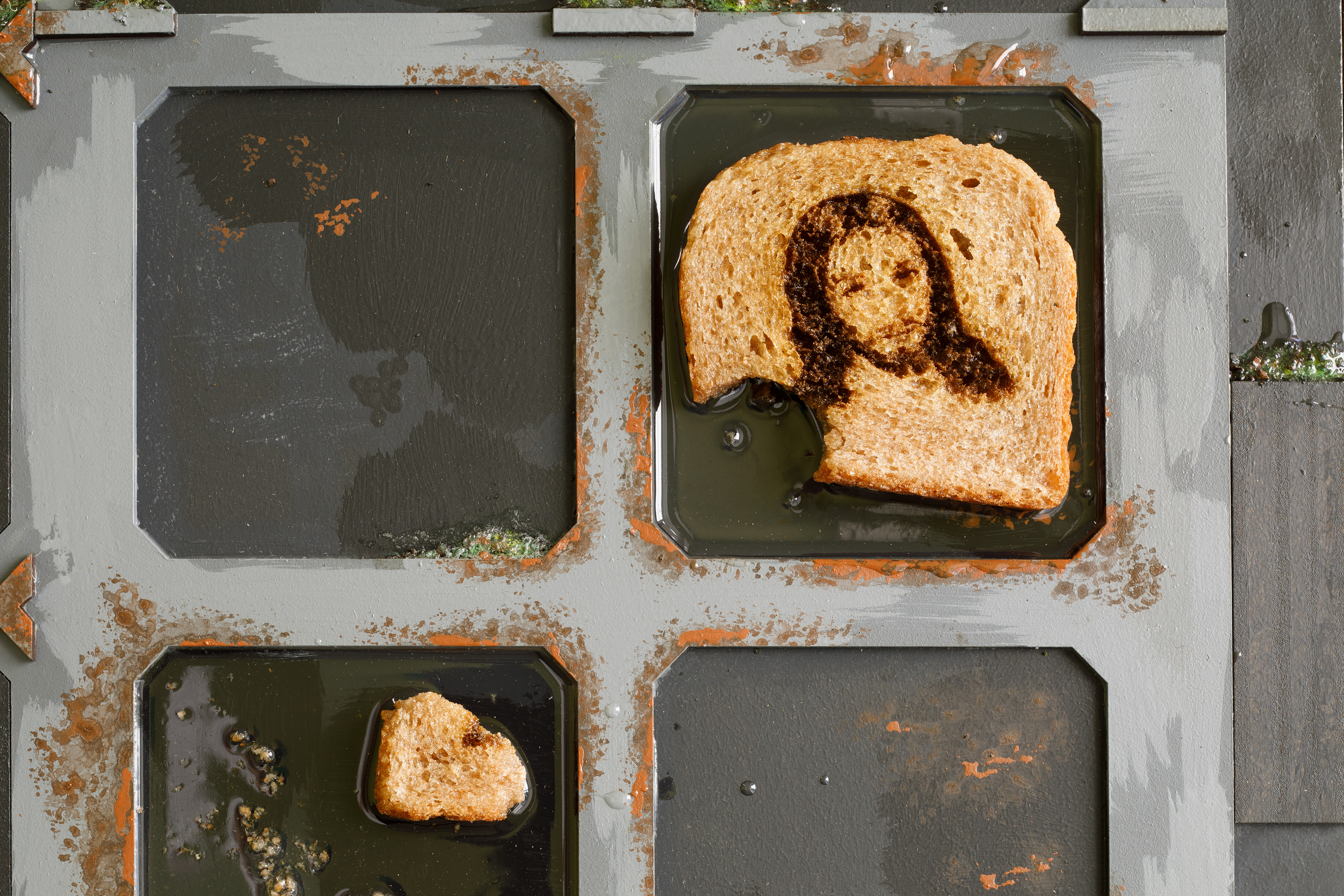
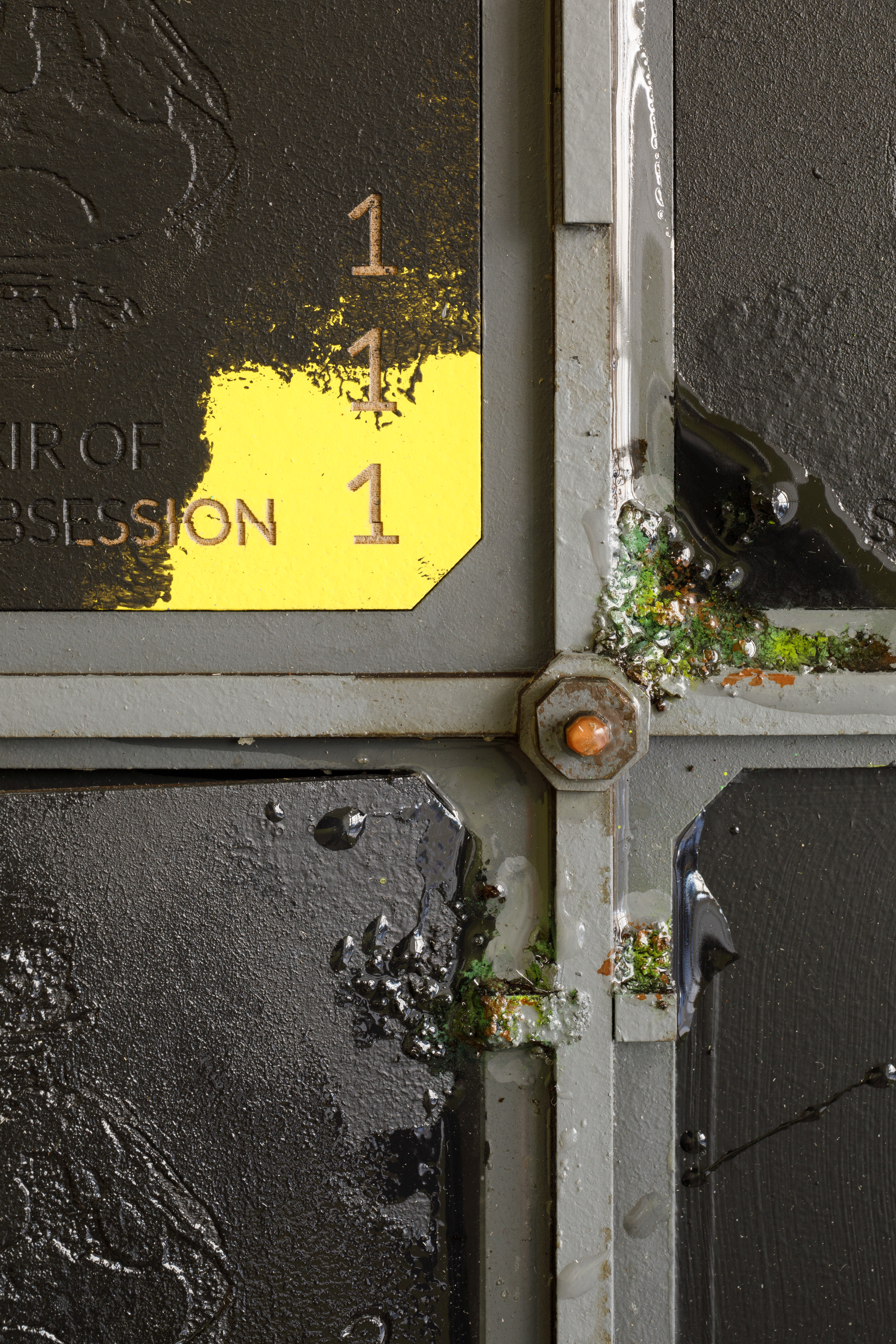
The warning lights blink nervously, but we gradually get used to the noise, which makes our stomachs clench, just like the sound of the sirens, which has turned into an ordinary rhythmic melody. The ceiling fan is still spinning, as if pretending out of inertia that everything continues on. The escape maps are lost under layers of dust, and the lack of resources is becoming more and more apparent. It’s hard to predict what will happen when the timer counts down to the final seconds and we realize that there never was any backup plan. Life jackets left hanging on coatracks, telephones ringing in vain. Last one to leave please turn out the lights.
The international exhibition project Emergency breaks down elements of reality and reassembles them into new forms. It takes inspiration from limit situations and crises, communicating in the language of dystopia, post-apocalypse, and pop culture. We observe extinctions, collapses, impending catastrophes, and both our own and other people’s failures, out of which naturally arises a space for new beginnings and the potential for change. In the art of Jakub Choma, Thilo Jenssen, and Simon Lehner we can see work with found materials or prefabricated objects as well as inspiration from technological production, personal archives, instructional photographs, and computer games. Their works showcase both material diversity and the use of alternative production and processing techniques. The exhibition highlights personal crises, social upheavals, and environmental exclamation marks.
Jakub Choma (b. 1995, Košice, lives in Prague) has created a hybrid altar based on the aesthetics of computer games, depicting variations of a half-empty inventory of materials and resources. Paradoxically, the only thing that remains in the parched repository of the remnants of civilization is some scraps of sandwich bread with an engraving of the Savior, which very clearly reveals the absurdity of our values, the desire for miracles, and at the same time our helplessness in times of real scarcity.
In the instructional, assemblage, and screenshot paintings of Thilo Jenssen (b. 1984, Daun, lives in Vienna) we observe situations on the border between control and the loss of control. The affected theatricality of first aid rhythmically alternates with minimalistic, contrasting colored surfaces, crudely “stitched” into new compositions. Moving freely between object and image, Jenssen draws attention to the fragility of the human body and its dependence on support systems—from the digital to the analogue.
Simon Lehner (b. 1996, Wels, lives in Vienna) makes full use of personal archives in his work, which is influenced by photography and focuses on themes of identity and toxic masculinity. In a slow-motion cinematic shot, we observe an apparently intoxicated elderly figure in an ecstatic dance. In the empty space reminiscent of an American high school prom, he looks absurd, as if he doesn’t belong there. He has lost touch with reality, but it is in this intoxication that a disturbing, psychological portrait begins to emerge of a man trapped in an illusion that never belonged to him.
Výstražné kontrolky nervózne blikajú, no na zvuk, z ktorého sťahuje žalúdok, si postupne zvykáme, rovnako ako na hlas sirén, ktorý sa zmenil na obyčajnú rytmickú melódiu. Stropný ventilátor sa ešte stále točí, akoby zo zotrvačnosti predstiera, že všetko ide ďalej. Mapy úniku sú stratené pod vrstvami prachu a nedostatok surovín sa začína prejavovať čoraz výraznejšie. Je ťažké predpokladať, čo sa stane, keď časovač dopočíta posledné sekundy, a my si uvedomíme, že záložný plán nikdy neexistoval. Záchranné vesty ostali visieť na vešiakoch, telefóny zvonia naprázdno. Posledný na parkete nech zhasne.
Medzinárodný výstavný projekt Emergency rozkladá prvky skutočnosti a nanovo ich skladá do nových foriem. Inšpiruje sa hraničnými a krízovými situáciami, pričom komunikuje jazykom dystopie, postapokalypsy a populárnej kultúry. Sledujeme zániky, kolapsy, blížiace sa katastrofy, osobné či cudzie zlyhania, z ktorých prirodzene vzniká priestor na nové začiatky a potenciál na zmenu. V tvorbe Jakuba Chomu, Thila Jenssena a Simona Lehnera nachádzame prácu s nájdenými materiálmi či prefabrikátmi, inšpiráciu technologickou výrobou, osobnými archívmi, inštruktážnymi fotografiami či počítačovými hrami. Prítomná je materiálová rôznorodosť aj využívanie alternatívnych výrobných a spracovateľských procesov. Výstava poukazuje na osobné krízy, spoločenské otrasy aj environmentálne výkričníky.
Hybridný oltár Jakuba Chomu (1995, Košice, žije v Prahe) vychádza z estetiky počítačových hier, pričom zobrazuje variácie poloprázdneho inventára materiálov a surovín. Vo vyprahnutom úložisku civilizačných zvyškov paradoxne zostali len zvyšky toastového chleba s vygravírovaným Spasiteľom, ktoré tak zreteľne odhaľujú absurdnosť našich hodnôt, túžbu po zázraku a súčasne bezmocnosť v čase skutočného nedostatku.
V screenshotových, inštruktážnych a asamblážových maľbách Thila Jenssena (1984, Daun, žije vo Viedni) sledujeme situácie na hranici medzi kontrolou a stratou kontroly. Patetická teatrálnosť prvej pomoci sa rytmicky strieda s minimalistickými kontrastnými farebnými plochami, surovo „zošitými“ do nových kompozícií. Voľne sa pohybujúc medzi objektom a obrazom, Jenssen upozorňuje na krehkosť ľudského tela a jeho závislosť od podporných systémov – od digitálnych až po analógové.
Simon Lehner (1996, Wels, žije vo Viedni) vo svojej fotografiou ovplyvnenej tvorbe naplno využíva osobné archívy, pričom tematizuje problematiku identity a toxickej maskulinity. V spomalenom kinematografickom zábere sledujeme zjavne intoxikovanú staršiu postavu pri extatickom tanci. V prázdnom priestore pripomínajúcom maturitné plesy amerických stredných škôl pôsobí absurdne, akoby tam nepatril. Stráca kontakt s realitou, no práve v tomto opojení sa začína vynárať znepokojivý, psychologický portrét človeka uviaznutého v ilúzii, ktorá mu nikdy neprislúchala.
Hybridný oltár Jakuba Chomu (1995, Košice, žije v Prahe) vychádza z estetiky počítačových hier, pričom zobrazuje variácie poloprázdneho inventára materiálov a surovín. Vo vyprahnutom úložisku civilizačných zvyškov paradoxne zostali len zvyšky toastového chleba s vygravírovaným Spasiteľom, ktoré tak zreteľne odhaľujú absurdnosť našich hodnôt, túžbu po zázraku a súčasne bezmocnosť v čase skutočného nedostatku.
V screenshotových, inštruktážnych a asamblážových maľbách Thila Jenssena (1984, Daun, žije vo Viedni) sledujeme situácie na hranici medzi kontrolou a stratou kontroly. Patetická teatrálnosť prvej pomoci sa rytmicky strieda s minimalistickými kontrastnými farebnými plochami, surovo „zošitými“ do nových kompozícií. Voľne sa pohybujúc medzi objektom a obrazom, Jenssen upozorňuje na krehkosť ľudského tela a jeho závislosť od podporných systémov – od digitálnych až po analógové.
Simon Lehner (1996, Wels, žije vo Viedni) vo svojej fotografiou ovplyvnenej tvorbe naplno využíva osobné archívy, pričom tematizuje problematiku identity a toxickej maskulinity. V spomalenom kinematografickom zábere sledujeme zjavne intoxikovanú staršiu postavu pri extatickom tanci. V prázdnom priestore pripomínajúcom maturitné plesy amerických stredných škôl pôsobí absurdne, akoby tam nepatril. Stráca kontakt s realitou, no práve v tomto opojení sa začína vynárať znepokojivý, psychologický portrét človeka uviaznutého v ilúzii, ktorá mu nikdy neprislúchala.
